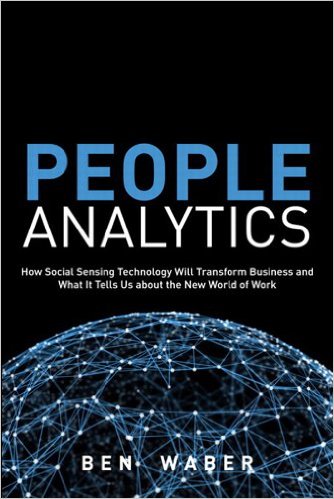After several years of industry buzz about the HR possibilities that lie within data analytics, little progress was made in implementation. Business Leaders seemed to like the concept, but weren’t ready to buy in. This year, however, is shaping up to be the year that we get beyond the discussion and into People Analytics.
 People Analytics is a growing area of Business Intelligence that uses a data-driven approach to solving problems and making decisions using people-related data. The concept isn’t new, but its popularity is.
People Analytics is a growing area of Business Intelligence that uses a data-driven approach to solving problems and making decisions using people-related data. The concept isn’t new, but its popularity is.
According to Deloitte’s Global Human Capital Trends report for 2016, the percentage of companies that believe they are ready or somewhat ready for analytics increased from less than 25% to almost a third. A full 77% of the companies surveyed acknowledged the importance of people analytics for decision making and strategic planning. Deloitte reports that, due to competitive pressures and the greater availability of systems, organizations are aggressively building analytics teams and developing solutions.
Most businesses have the need to determine where to find the best employees, why employees are attracted to their organization, why they stay or leave; who will likely find success or be promoted, or who will be the best leaders. People Analytics can help. As explained in an article last week in Computer Weekly, in terms of recruitment, analytics can help to improve process efficiencies and optimize costs by determining the best candidates and the best recruitment channels for specific roles.
People Analytics is not just confined to HR decisions, however, as companies are using people-related data to provide guidance for many types of business decisions. Banks are using people analytics as a tool to analyze behaviors that can lead to fraud, noncompliance or unethical behavior. Healthcare organizations are using it to drive clinical and operational improvements.
People-related data should not be thought of as HR data. In fact, people related data can come from across the organization as well as outside of the organization. Deloitte’s 2016 report mentions a pharmaceutical company that is collecting data from social media sources to predict who the “high-flight-risk” candidates are among their current employees.
The growing popularity of People Analytics is not all related to its capabilities. Some of it has to do with Cloud Computing. As more and more analytics providers are offering cloud based services, which minimize administrative, infrastructure and equipment costs, it is easier and more cost effective for businesses to adopt.
If your organization isn’t quite ready to hire an analytics staff or invest in data analytics software, you are not alone. That doesn’t mean you can’t start with some basics, however. The 2016 version of Excel comes with a built-in capability to collect data from a variety of sources, such as corporate databases and public websites, and transform this data into something valuable. Download the Power BI Desktop to go with it for more robust capabilities, and you will have more than enough analytics power to get started.
 Data analytics, sometimes referred to as Big Data, is the process of examining large data sets containing numerous data types in an attempt to uncover hidden patterns. The goal is to make human resources and talent management decisions based on data, not intuition or “gut instincts”, and is being driven by all of the new sources of data available coupled with the technological ability to crunch all of it..
Data analytics, sometimes referred to as Big Data, is the process of examining large data sets containing numerous data types in an attempt to uncover hidden patterns. The goal is to make human resources and talent management decisions based on data, not intuition or “gut instincts”, and is being driven by all of the new sources of data available coupled with the technological ability to crunch all of it..